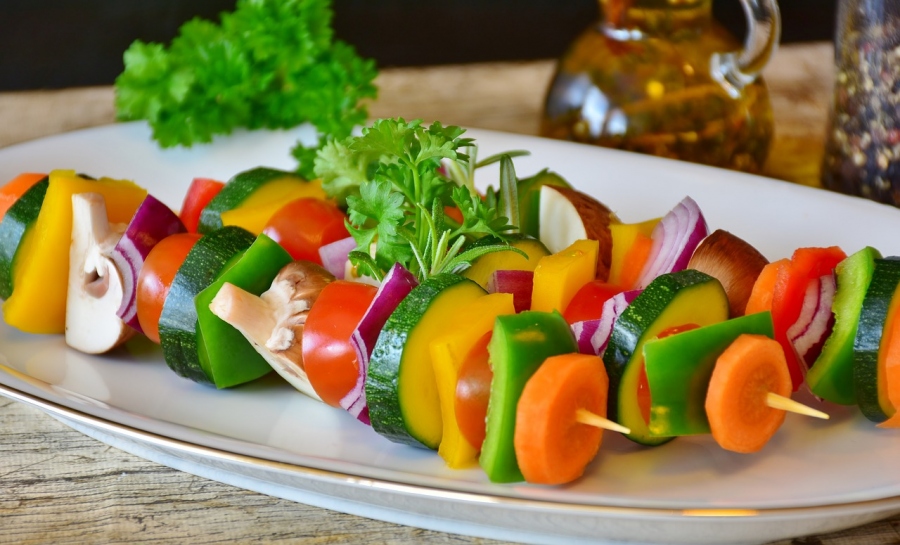You started a vegetable garden, but want to have more fresh produce? This can depend on the soil, climate, pests, and care you give to your plants. However, with some simple tricks, you can increase your vegetable garden yield and enjoy its high productivity. Here’s what can help!
-
Start preparing your soil early
Winter is the perfect time to add organic matter to your soil to nourish it for the spring. Compost and leaf mold are the best choice you can make at home, but you can also use manure. Once your plants start growing, add more organic matter around the crops to boost their development.
This will prevent weeds from growing and allow the soil to retain water, making it healthy and moist for the plants.
-
Grow vegetables that thrive in your region
The key for a vegetable garden to yield is the choice of plants you intend to cultivate. If this is your first time doing this, start with veggies that are common in your area. Research what varieties could thrive in your climate and are not so frequent among the local gardeners.
For example, cabbage loves colder areas, while tomatoes will grow in abundance in the sunny regions. This can also be a guideline when to grow which vegetable and have fresh produce almost all year round.
-
Keep your plants well-fed
Fertilizing your veggies is a must since the sun, soil, and water may not be enough for them to grow strong and abundantly. You can buy organic fertilizers, like seaweed concentrate or you can make your own from comfrey.
This is a leafy herb you can grow by the compost bin or any damp space in your garden. It’s full of important nutrients: Nitrogen, Phosphorus, and Potassium that are essential for plant growth. You can make comfrey tea and pour in the garden beds, or cut the leaves around your vegetables, as well as add it to compost.
-
Build dedicated beds in your vegetable garden
Using raised beds for vegetables will make gardening easier and allow easy access to your plants from all sides. This is a great way to keep your garden tidy and well organized so you can give equal attention to all your veggies. It’s more comfortable since you won’t have to kneel and crawl between the rows.
-
Collect rainwater for irrigation
Rainwater is a better choice for irrigation because the plants love its pH and it has fewer contaminants. With a pump installed on the barrel, you can use a hose reel just like you would with a regular garden tap. Plants love rainwater because it’s soft and not treated with chemicals, which is the case with municipal water.
Additionally, when rain is collected from the roof, it can contain organic matter, as well as more nutrients. Use more barrels joined together with a connecter to catch as much of it as you can which will come in handy during the dry seasons.
-
Create sufficient space between plants
If your rows are too close, the plants will fight for nutrients in the soil and prevent each other from growing to its full yield. However, making more distance between the plants than needed will be a waste of space. Before planting, find out which plants like the crowds and which ones you should keep apart.
Drawing or drafting a gardening plan may also help, especially if you have limited space or lots of vegetables to grow. Take into consideration vertical growing and raised beds since those can create extra room and bring order to the garden.
-
Have a strategy for pest control
You can take care of pests with more than one strategy. For example, companion planting can introduce a plant that will protect your veggies but attracting pests to itself. Crop rotation can also reduce pests, as well as growing hybrid seeds.
If you are dedicated to eco-friendly and clean pest protection, the chance is that you may already have everything you need in your home. Natural pesticides, like soap spray and neem oil, can disrupt the intruders’ lifecycle and take care of grown insects such are aphids, beetles, and mites.
-
Don’t avoid growing in the shade
If you have shaded parts in your garden, use them to grow varieties that thrive there. Lettuce, parsnip, and leeks will give excellent yield if planted in the shade. Separating the veggies into sun-loving and shade-tolerant crops will give you efficient space organization and prevent waste of time and resources.
When the garden is completely exposed to sunlight, you can grow your veggies vertically on trellis or stakes. Climbers, like cucumbers and squash, will then grow up and provide shade under their canopy for veggies that don’t need much sun.
Final say
To increase your vegetable garden yield you don’t have to use expensive machinery and study complicated techniques. Although these simple tricks may seem too easy, they are based on science and successful practices of years of farming. Moreover, they are healthier for the environment, which means they are healthier for you and your veggies.




You must be logged in to post a comment.